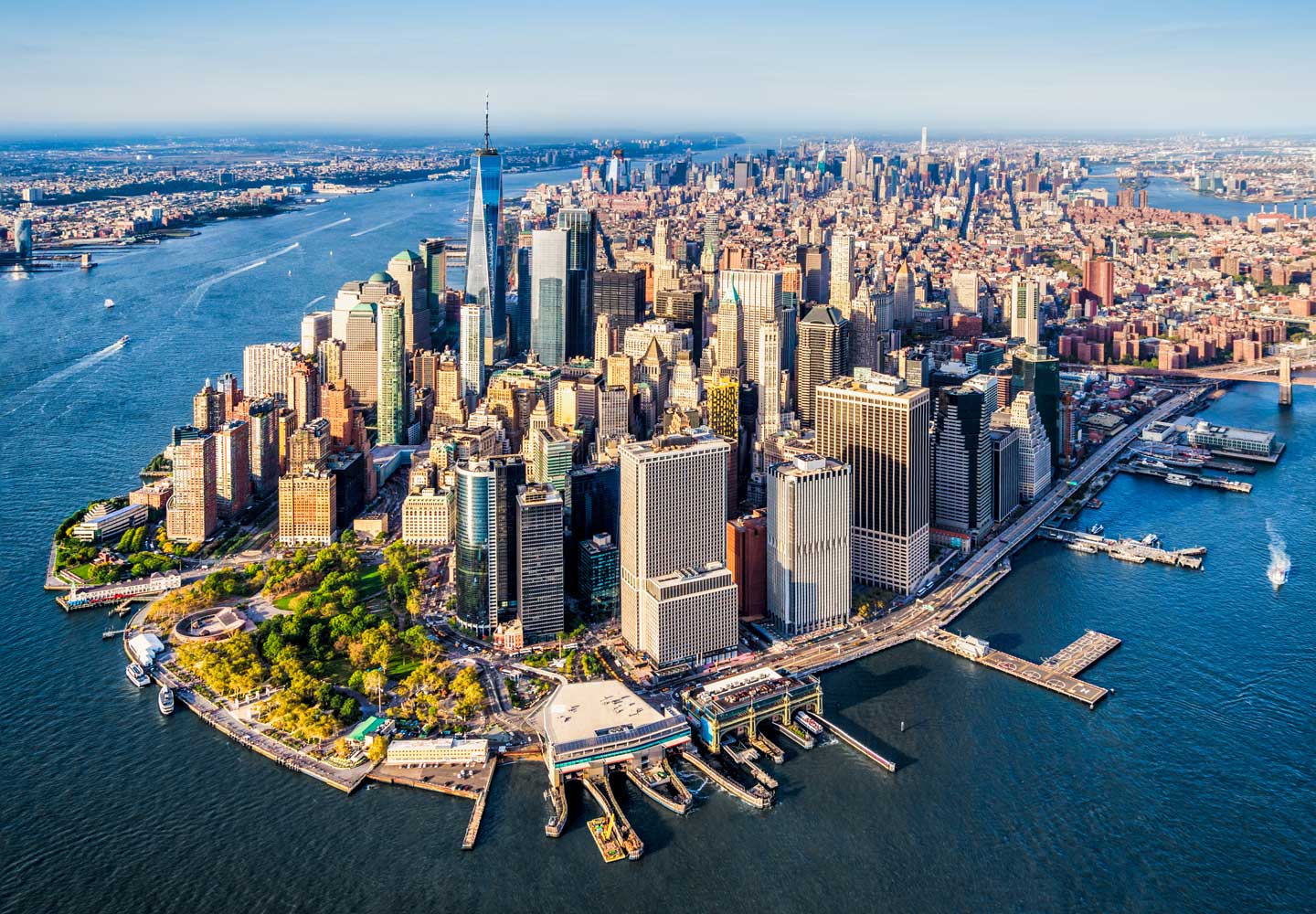Mayor: Save Our City
By Julie Collins and Clay Malcolmson
In the early hours of February 5, 1932, the steamship Jane Jabot collided with the trawler Eleanor Nickerson off the coast of Nova Scotia. A Nor’easter blizzard coming through the Atlantic Ocean created a perfect storm of fatal climatic conditions: limited visibility, rough seas, and frigid temperatures. Most of the 30 member crew on board the Eleanor Nickerson were huddled below deck, trying to stay warm and out of the storm when the Jane Jabot struck the side of the ship. The Eleanor Nickerson immediately began to take on water. There were plenty of lifeboats to save the lives of all those on board. However, more than two-thirds of the crew drowned. Why? They were slow to prepare and to act, and missed the life-saving window of opportunity. This story is a cautionary tale of how the earth controls the environment, and when the team is unprepared and unable to act quickly, the results are often devastating.
Today, New York City stands in a similar predicament: the disastrous effects of Superstorm Sandy, and most recently Hurricane Ida, have shown how New York City is proverbially “taking on water.” The lack of preparedness and failure to take preventative action has resulted in the loss of lives and billions of dollars in damages. However, unlike the fate of the Eleanor Nickerson, there is still a chance to save New York City before more lives are lost and areas of the city are drowned as continual flood plains. By delaying action, the city faces the same tragic outcome as the Eleanor Nickerson. Decisive measures must be taken now to save the most vulnerable parts of our city.
The threats from more frequent superstorms and sea-level rise are commonly accepted realities given the experiences with both Superstorm Sandy and Hurricane Ida. Both of the last two Mayoral Administrations have been working on plans to protect the city from similarly disastrous outcomes. Unfortunately, progress on the projects to safeguard the city have been mired in conflicting perspectives between local communities and city engineering teams on the best solutions, a lack of willpower and prioritization to move things forward, as well as skyrocketing costs. Tensions are high since the initial “berm and flow” plan that was developed by architectural firm Bjarke Ingels Group (BIG) in conjunction with community engagement has been scrapped by the city in favor of a new “bury and raise” plan. This revised plan was developed by the DeBlasio administration, at an increased cost that ballooned to $1.45 billion from the original $335 million and a five-year completion plan that was slated to complete in 2026.

The protection and prevention effort is not going to be an easy feat. The City has over 520 miles of coastline, with many neighborhoods in low-lying areas that are subject to disastrous flooding. FEMA was in the process of updating New York City’s Flood Insurance Study (FIS) and Flood Rate Insurance Map (FIRM) when Hurricane Sandy struck on October 29, 2012. The Hurricane Sandy inundation area clearly equaled and exceeded the then-most updated 1983 100- and 500-year floodplains. This impact could have been much worse if it weren’t for the low tides when Sandy made landfall. FEMA’s updated FIS and FIRMs resulted in significant changes which projected that more than two million people, as well as critical roads and rail lines, will face a high risk of flooding by 2050.
So what can the newly minted Mayor Eric Adams do to ensure another administration does not continue without completing any new climate defenses for the City? These efforts would be an excellent opportunity for the new Mayor to begin his administration strongly by connecting with the impacted communities and interjecting his leadership into this project. This project has implications beyond the flood control ecosystem. It should create and signal a new collaborative approach component that engages the community and informs residents as the project progresses. Mayor Adams should move beyond the Robert Moses-era “top-down destroy and build” approach that continues to pervade New York City projects. There is also an opportunity to set a precedent for future projects that can change the perception that many of these large-scale projects ignore the local communities’ preferences, as had been the case throughout the ’50s, ’60s, and ’70s.
Mayor Adams’s announcement on January 31, 2022 of his new climate leadership team and the creation of the new Mayor’s Office of Climate and Environmental Justice (MOCEJ) is a strong start. The appointments of Rohit T. Aggarwala as chief climate officer and commissioner of the New York City Department of Environmental Protection (DEP), Vincent Sapienza as chief operations officer of DEP, and Kizzy Charles-Guzman as executive director of the new Mayor’s Office of Climate and Environmental Justice signal that he is taking the situation seriously.
However, putting people into jobs with inadequate funding for the work ahead will be an empty effort. Mayor Adams could reference other projects that created new sources of funding, such as the creation of the New York State Bridge Authority (NYSBA). The NYSBA has autonomous funding that is separate from state finances. This Authority created, and continues to present day, a consistent and stable funding flow for construction projects and managing debt. It also generates faster project timing. The Authority built its first bridge in unprecedented rapid timing, and quickly followed that success with other projects. Mayor Adams has a similar opportunity now to make big things happen. Environmental and engineering experts have submitted and validated plans that give the City precisely what it needs: solutions for the rising waters and flooding issues, and the bulk of the preservation concerns. These plans are the city’s lifeboats, just like with the Eleanor Nickerson’s crew, and we must stop being huddled below deck, climb in them, and row forward. An undeniable fact for New Yorkers is that the water is coming, and the vulnerable waterfront areas, which have a large portion of the city’s affordable and public housing, must prepare. It is a matter of when, not if, the walls of water hit the city. The key questions are “How fast can we launch the lifeboats?” and “Which neighborhoods are in them?”

Julie Collins is a second year EMPA student at NYU Wagner. She is a purpose driven leader focused on health equity and community service initiatives. Julie developed the proprietary “Launch, Learn, Pivot” process to get new thinking out quickly and continually optimize. Julie lives in New York in West Chelsea.

Clay Malcolmson is a graduate of the University of Manchester’s School of City & Regional Planning and also holds a Master of Science in Clinical Rehabilitation in Mental Health Counseling from the University of North Carolina in Chapel Hill. Clay is a currently a mental health practitioner while remaining connected to his passions as a city planner and urban historian and explorer.
Resources:
American Society of Landscape Architects, 2016 ASLA Professional Awards, Rebuild By Design, The Big U, https://www.asla.org/2016awards/172453.html.
Feldman, Ari Ephraim,(2021, March 29). Construction to Raise East River Park Above Rising Waters Starts This Spring, NY1.com, , https://www.ny1.com/nyc/all-boroughs/news/2021/03/29/construction-to-raise-east-river-park-above-rising-waters-starts-this-spring?cid=share_email.
Cities of the Future (2022, May 2). Future New York – $335 Million to Increase Resiliency in Lower Manhattan, The Big U by Bjarke Ingel, https://urldefense.proofpoint.com/v2/url?u=https-3A__youtu.be_GEmVETFPR3c&d=DwICAg&c=slrrB7dE8n7gBJbeO0g-IQ&r=hTSoVybsb9kmW3IH5NlLoQ&m=jc-DILgSe4V6gWsY86dw-Pn0MprfluxI4mlkIHL-KyQWW9xny0zEr9qy08KZv4cL&s=j_JquLJgJP3qKIV7IlMJuZESa4wVX4os-lHTG7vH8X4&e=.
NYC.gov Project Background, https://www1.nyc.gov/site/escr/about/project-background.page.
NYC.gov Project Elements, https://www1.nyc.gov/site/escr/about/project-elements.page.
Warriors In the Garden website, https://warriorsinthegarden.org/.
East River Park Action website, https://eastriverparkaction.org/.
Rising Tide exhibit, Museum of the City of New York, 1220 Fifth Avenue, New York, NY, November 20, 2021.
Staff (2021,July), Mayor Overrules Comptroller to Ensure Billion Dollar East Side Resilience Project Moves Forward, Bowery Boogie, https://boweryboogie.com/2021/08/mayor-overrules-comptroller-to-ensure-billion-dollar-east-side-resilience-project-moves-forward/?amp=1
East River Park Action Petition, https://www.change.org/p/andrew-m-cuomo-commute-the-death-sentence-for-east-river-park?utm_content=cl_sharecopy_24451276_en-US%3A1&recruiter=1135862604&utm_source=share_petition&utm_medium=copylink&utm_campaign=share_petition.
Green, Jared (2020, June 20). Berms Aren’t Enough: NYC Shifts Course on “Big U” Resilience Plan, The Dirt, https://dirt.asla.org/2019/06/20/first-phase-of-big-u-pivots-to-sea-walls/.
Moses, Dean (2020, July 27). Battle Over East River Park Resiliency Project Reaches Stringer’s Office with Protest, AMNY, https://www.amny.com/news/east-river-park-action-tells-stringer-to-kill-the-escr-low-bidder-contract-not-the-park/amp/.
Feldman, Ari Ephraim (2021, October 14). Ground Unbroken, East River Park Project Shows City’s Steep Resiliency Learning Curve; NY1.com, East River Park project shows city’s climate learning curve (ny1.com).
Feldman, Ari Ephraim (2021, November 15). After Court Orders Construction Pause, City Faces New East River Park Lawsuit, NY1.com, City faces new East River Park lawsuit (ny1.com). Zhao, Kellie (2021, May). The East Side Coastal Resiliency Project Breaks Ground, But Opponents Aren’t Backing Down, The Architect’s Newspaper, https://www.archpaper.com/2021/05/east-side-coastal-resiliency-project-breaks-ground-opponents-arent-backing-down/?amp=1.




